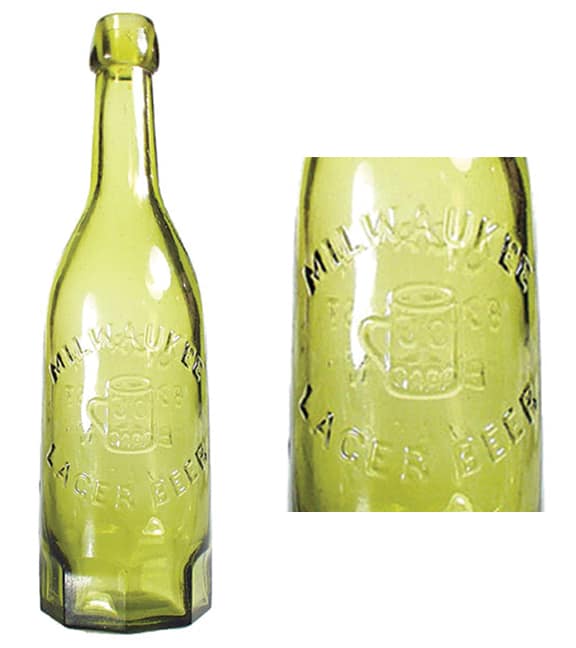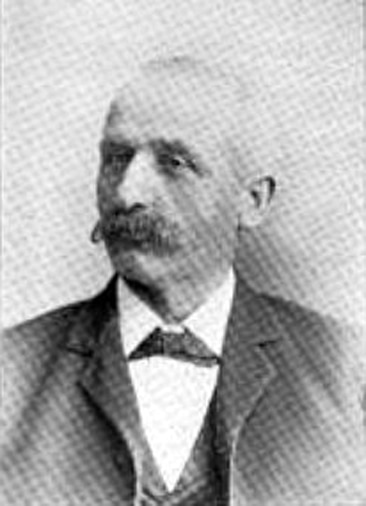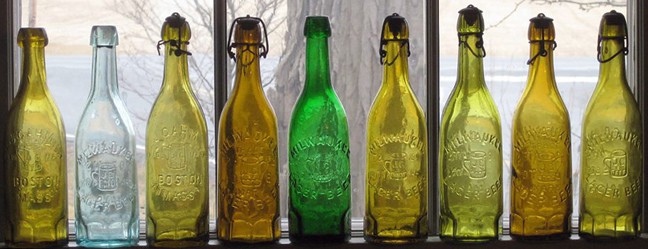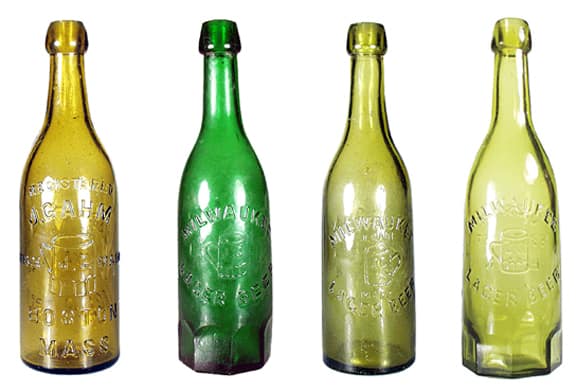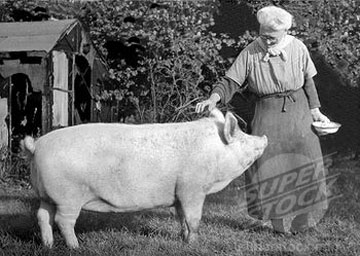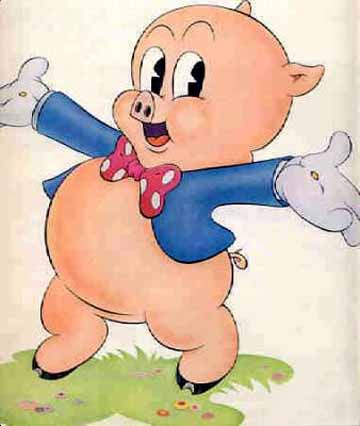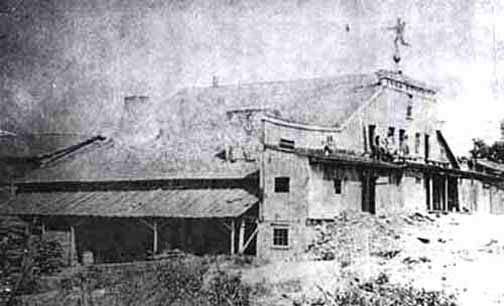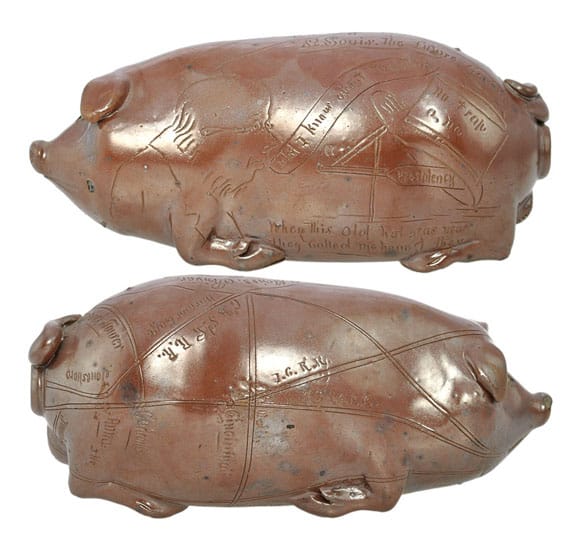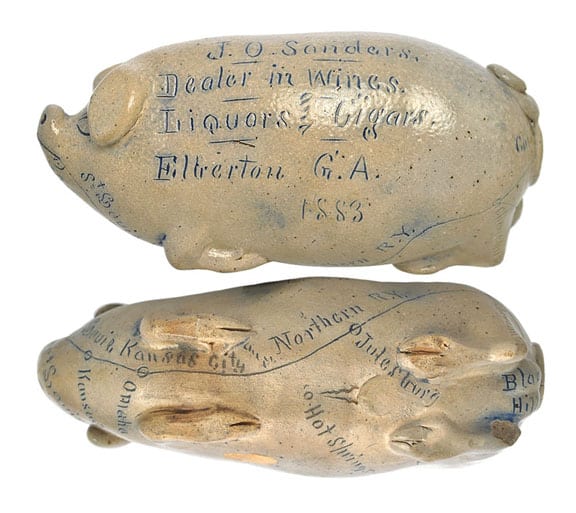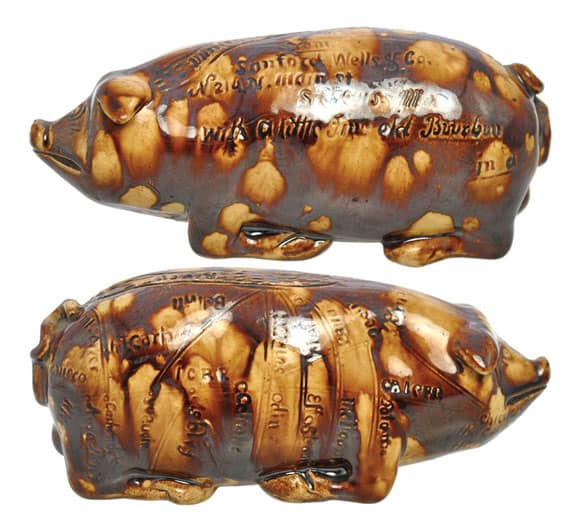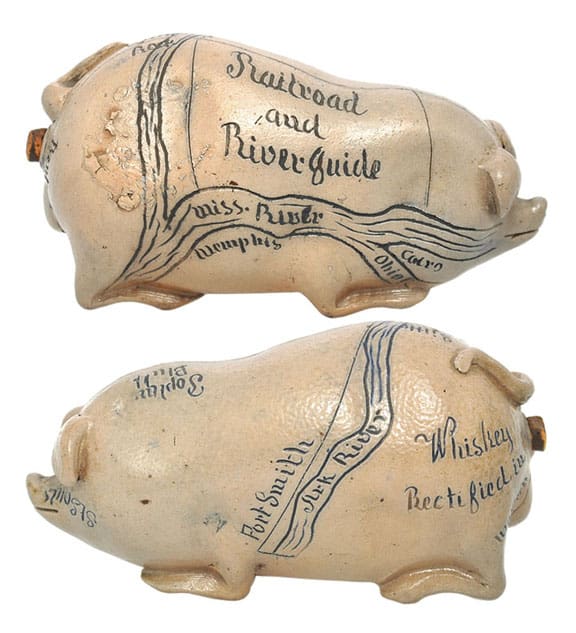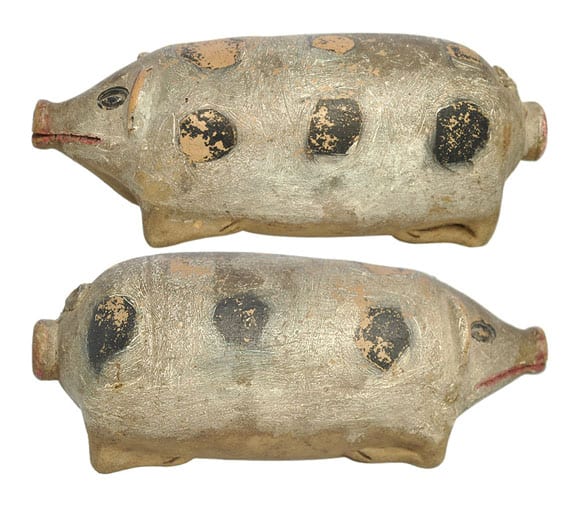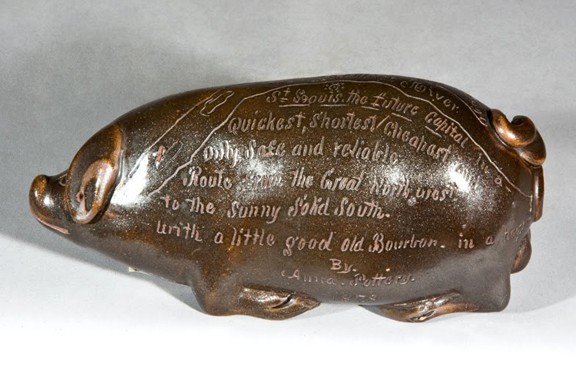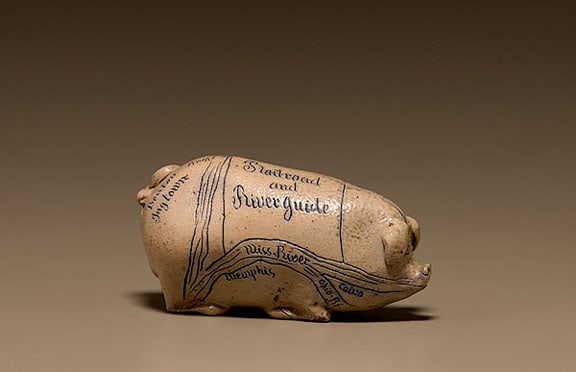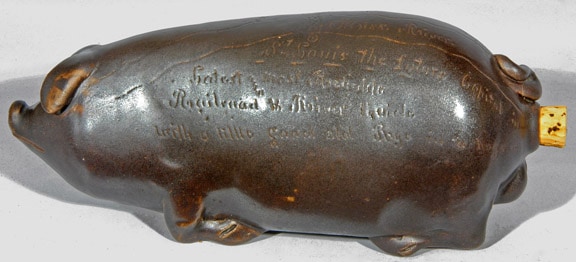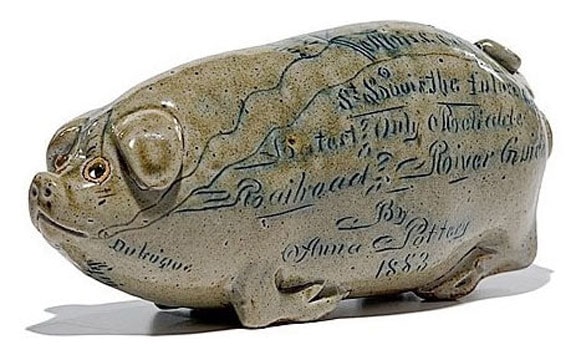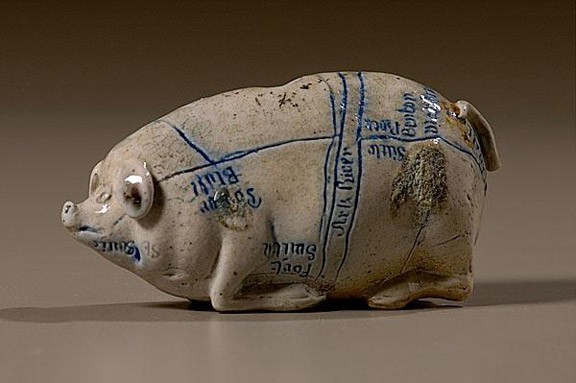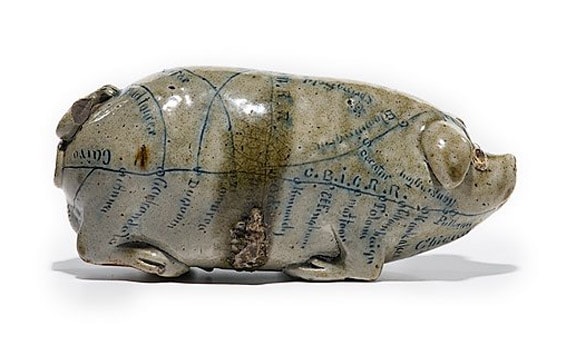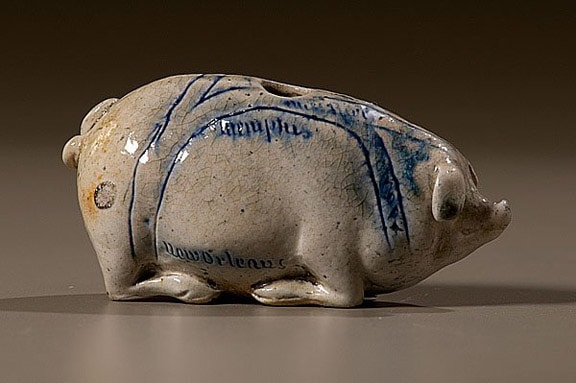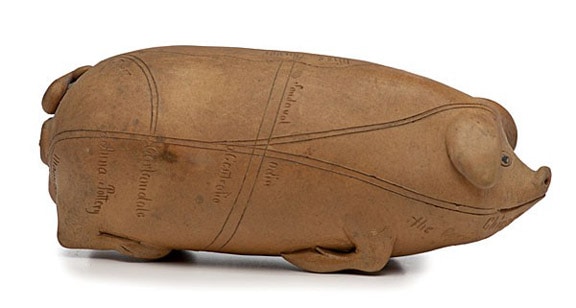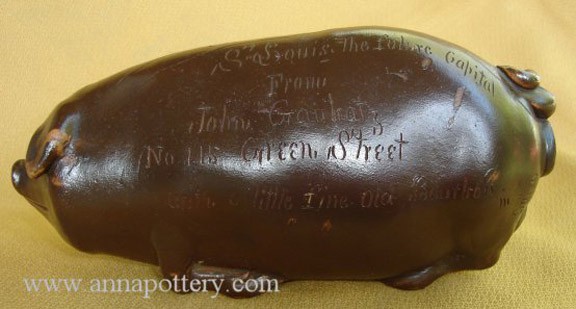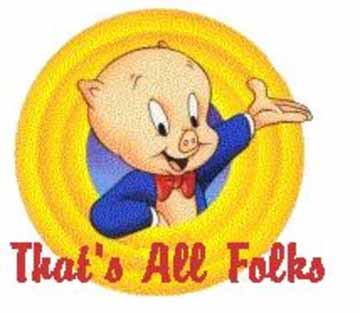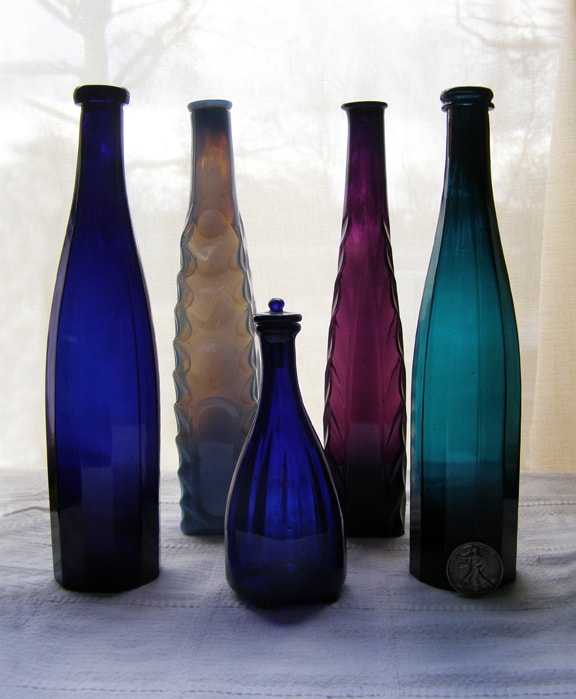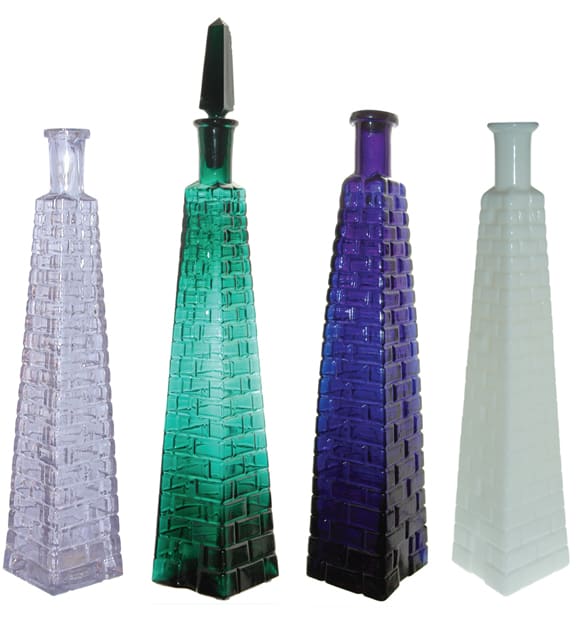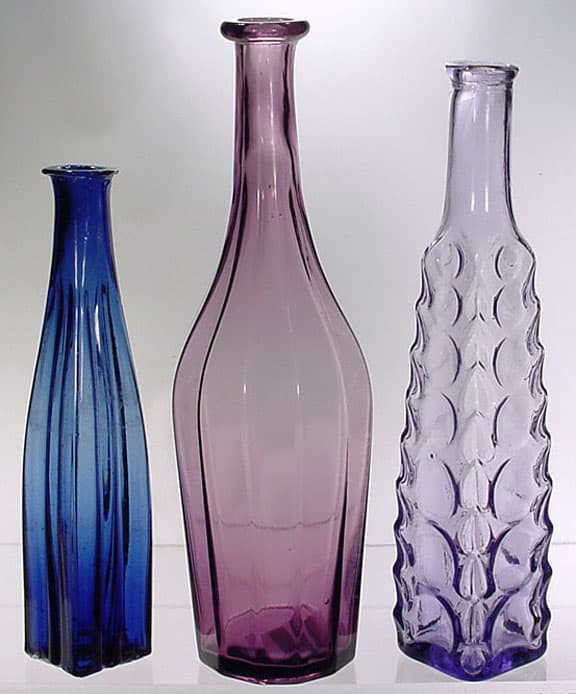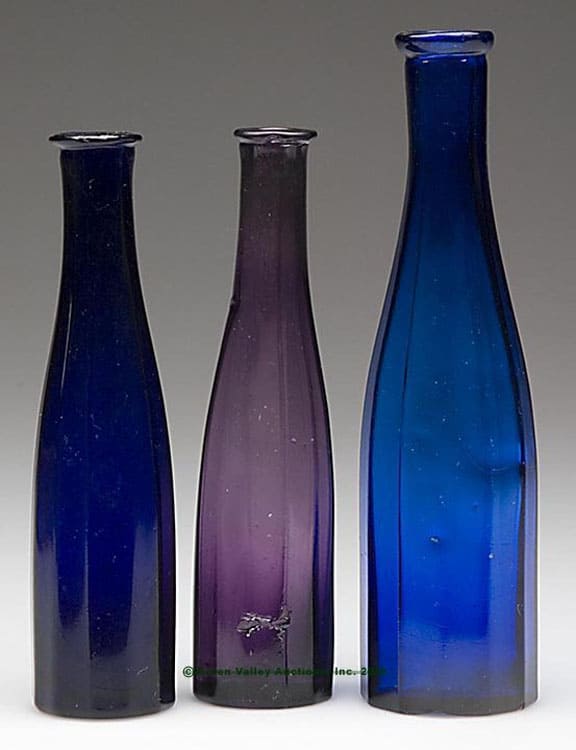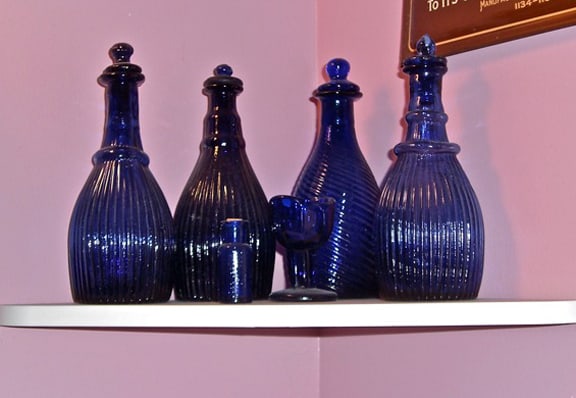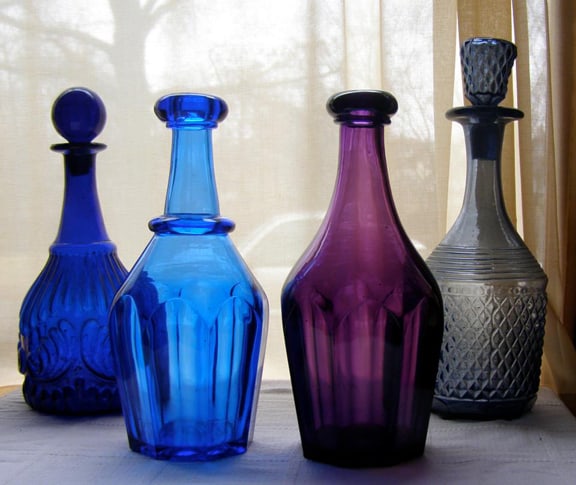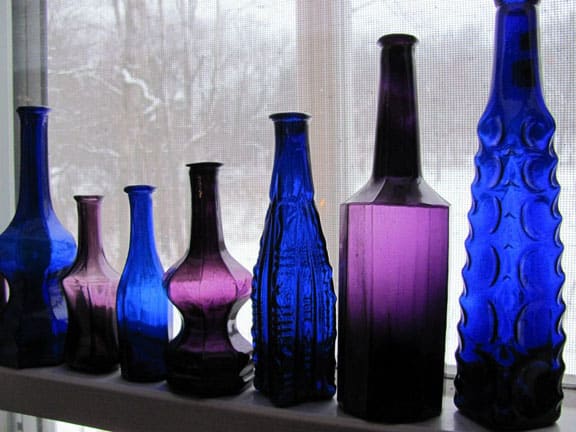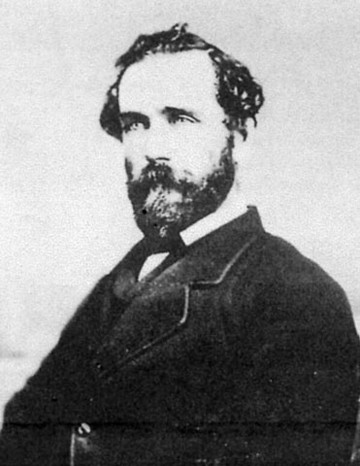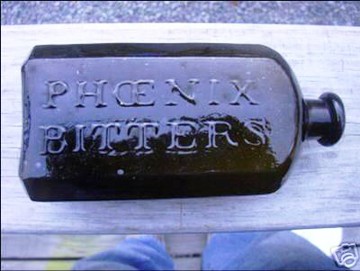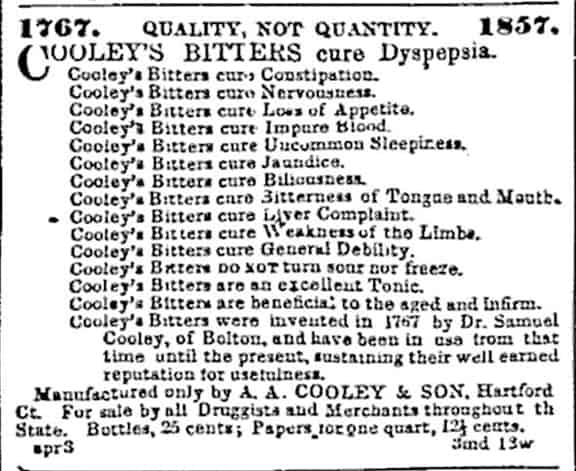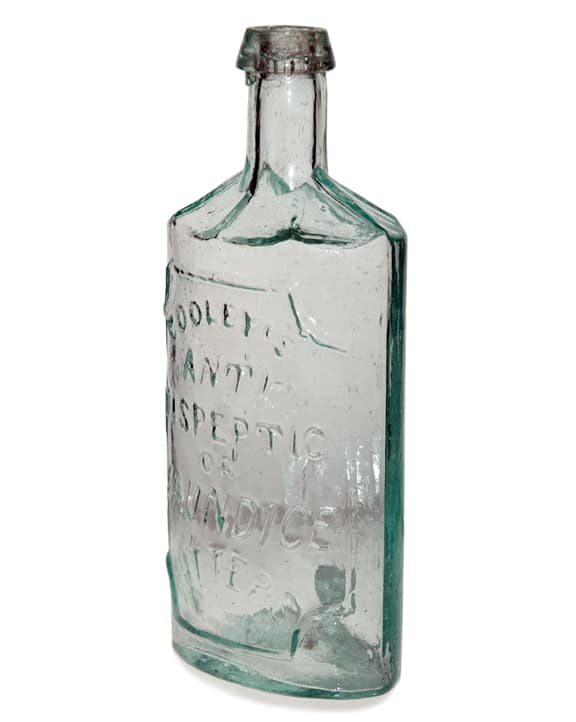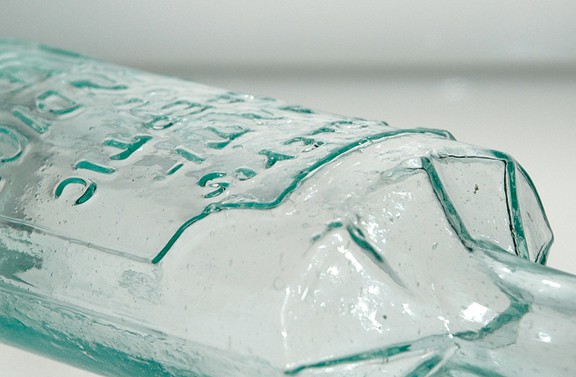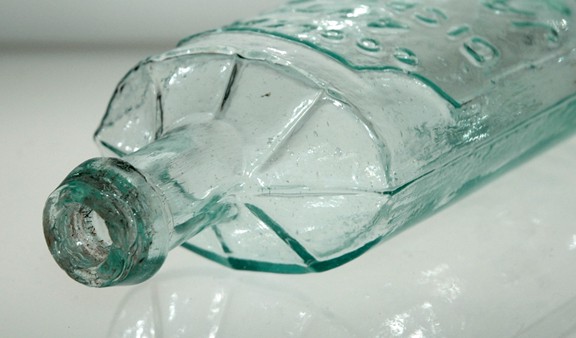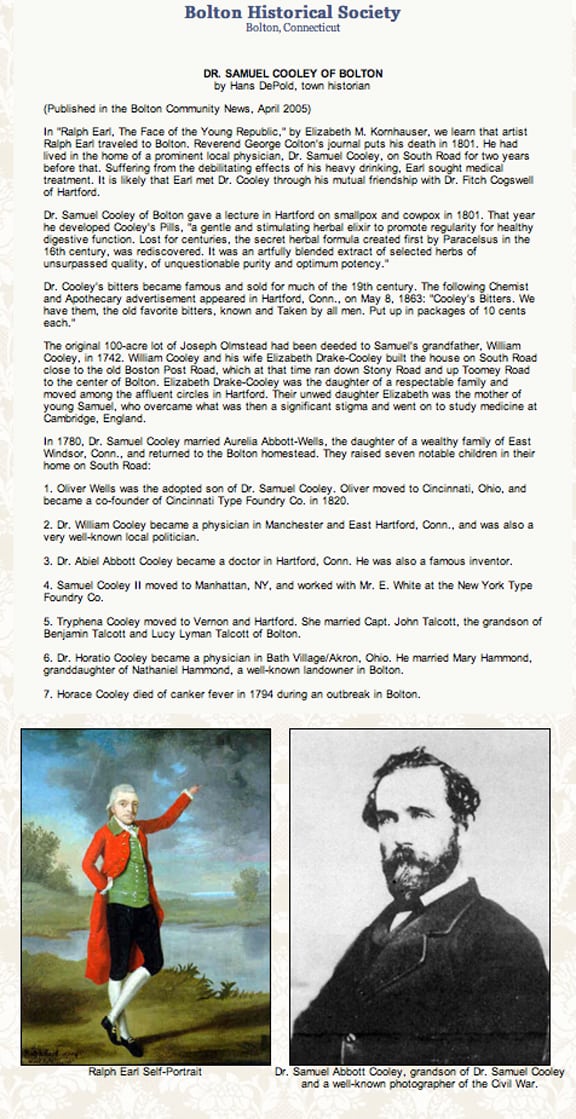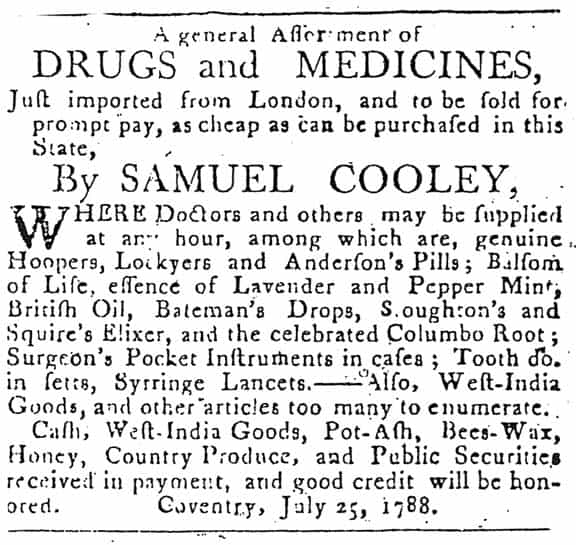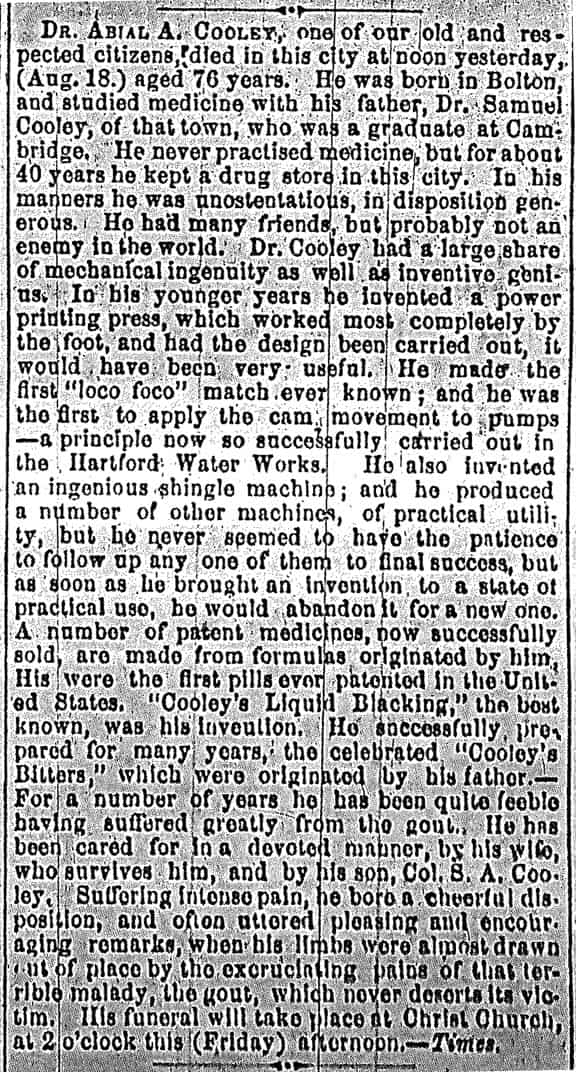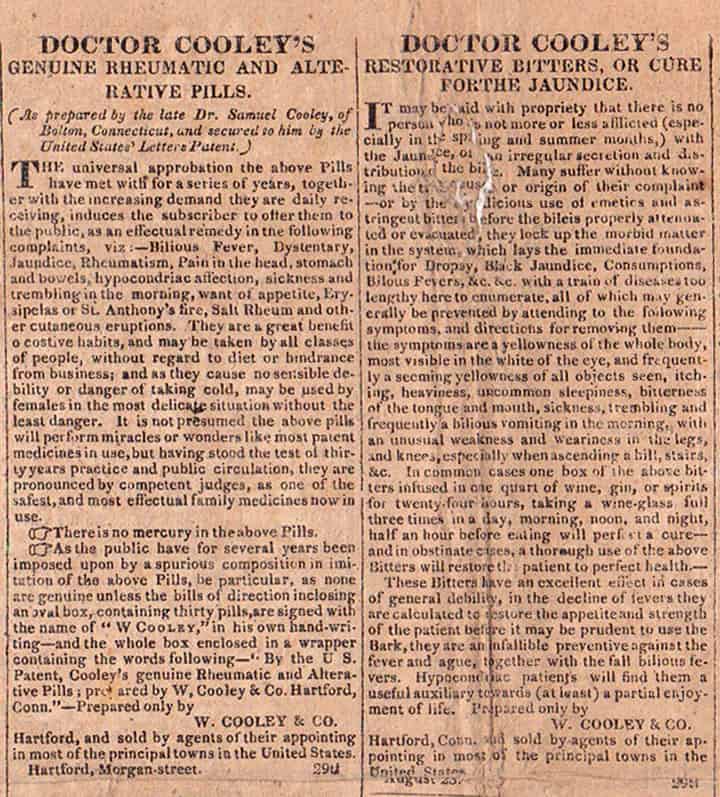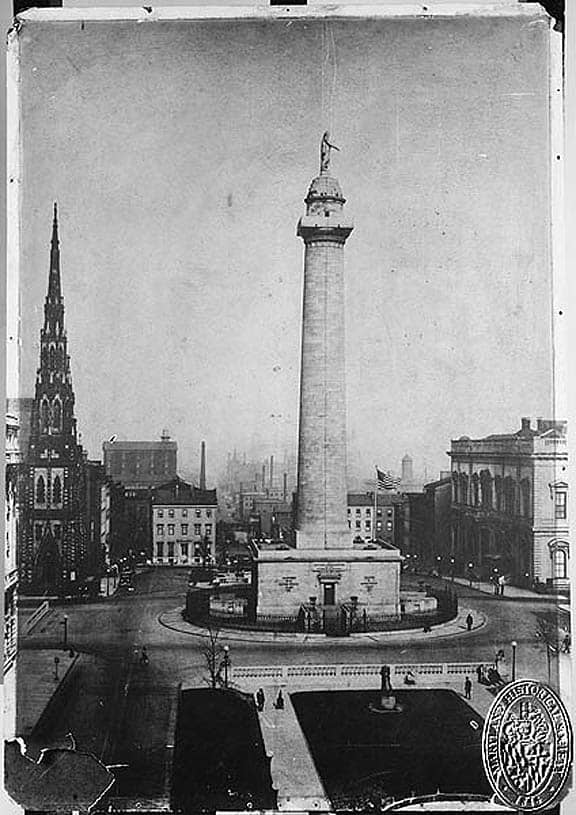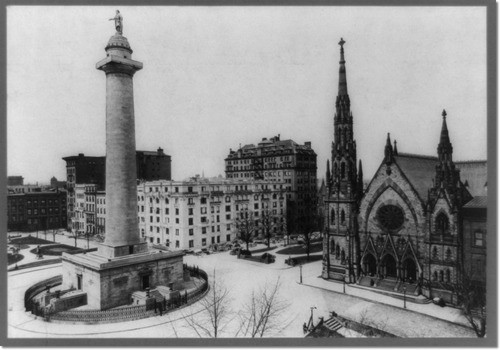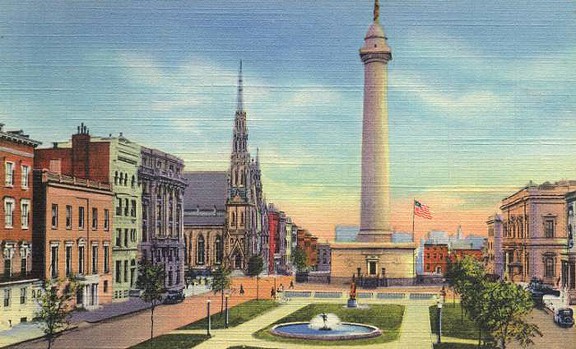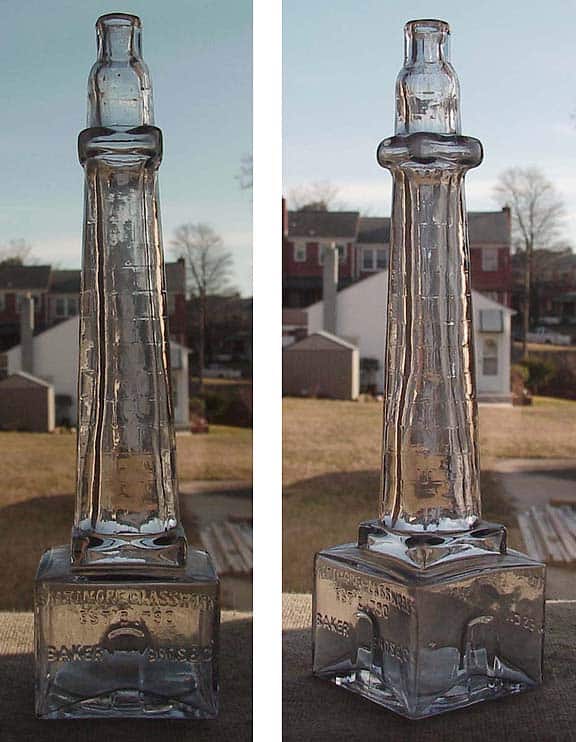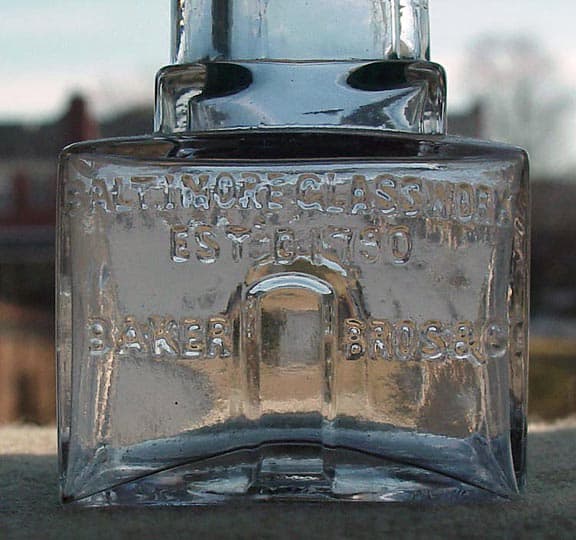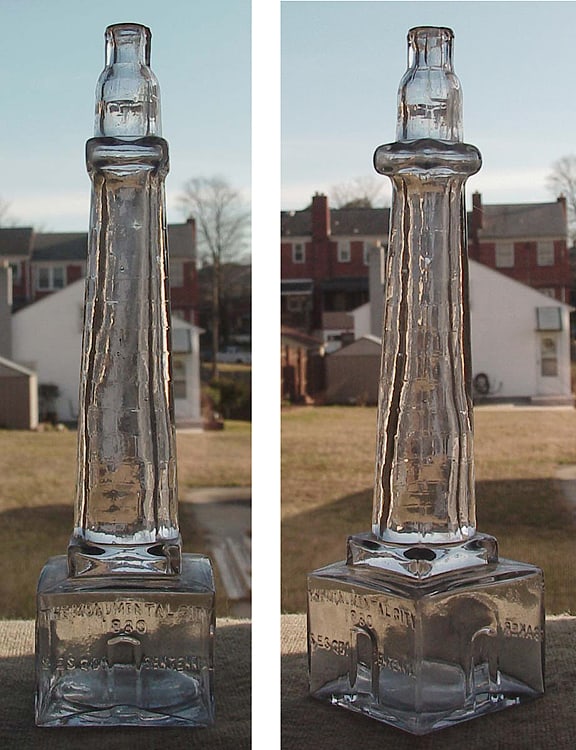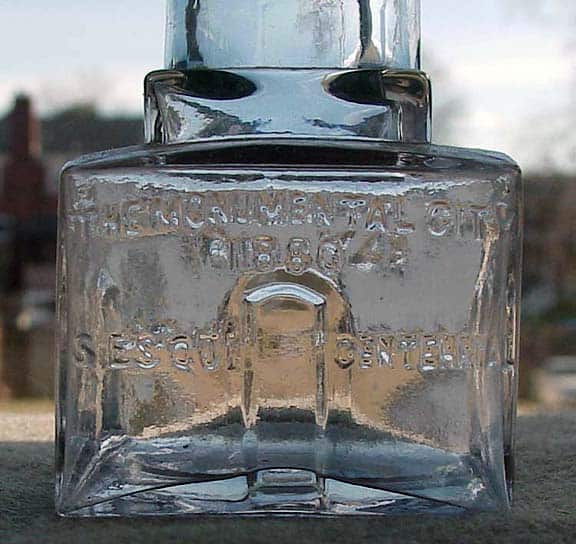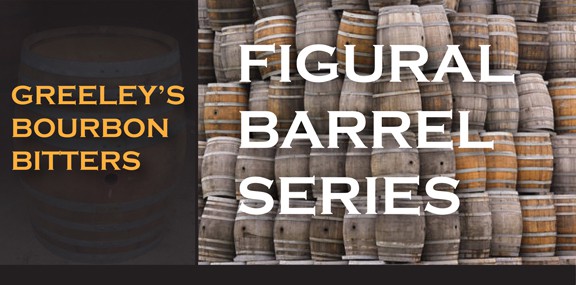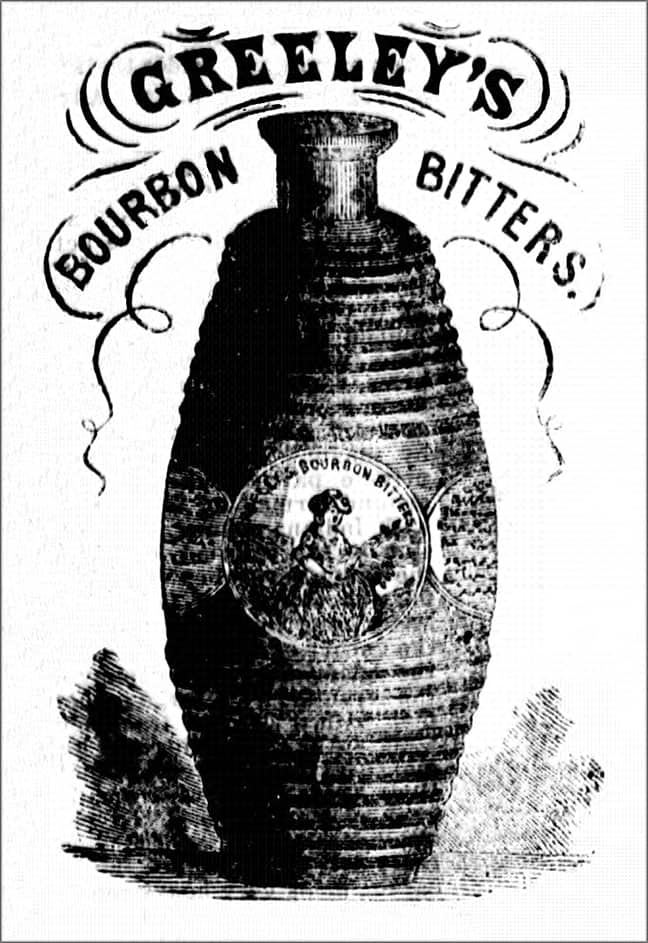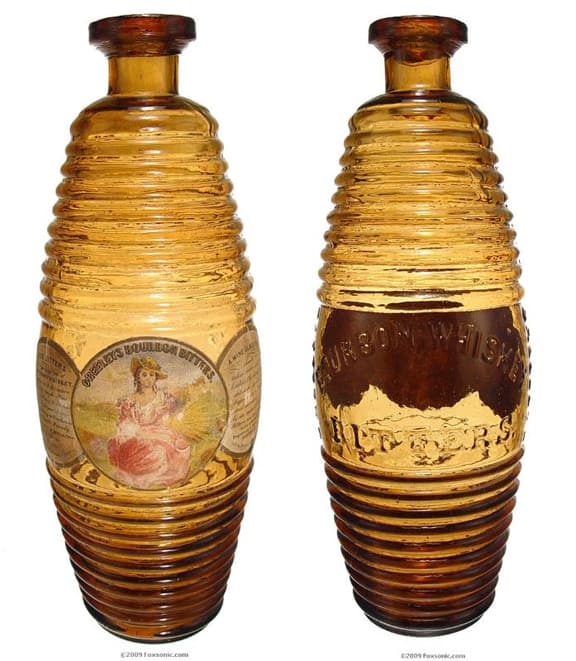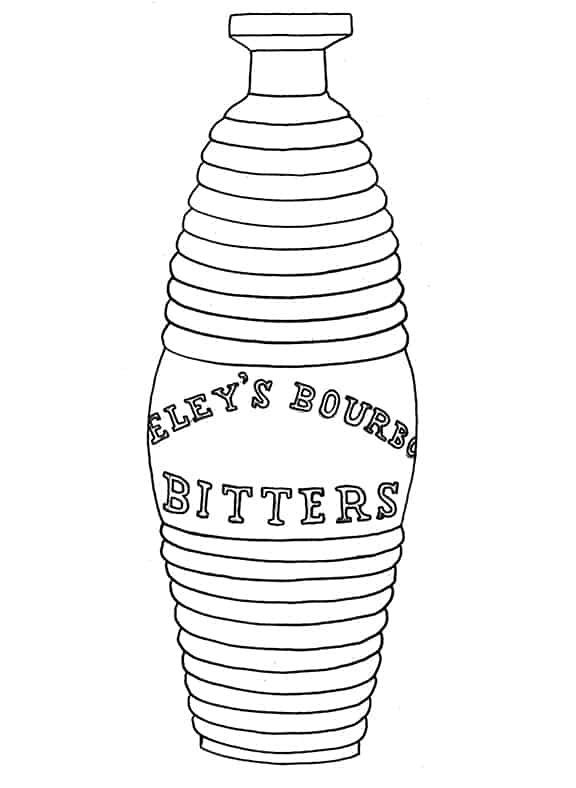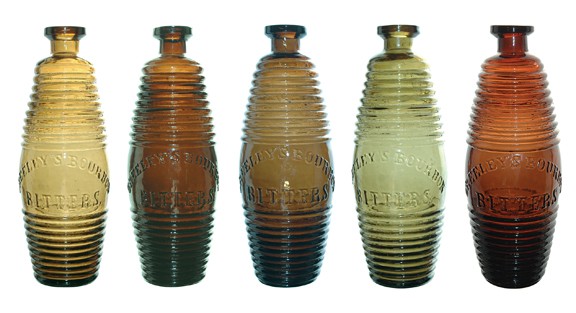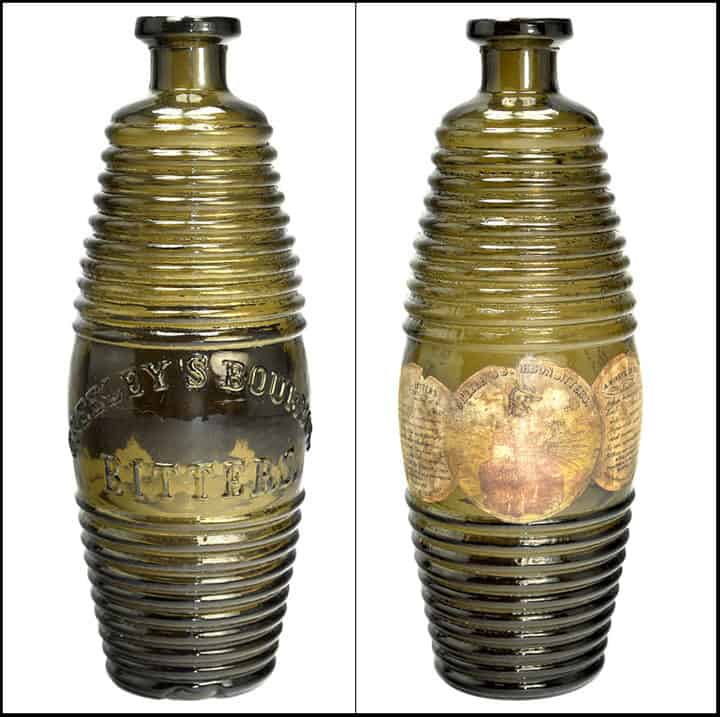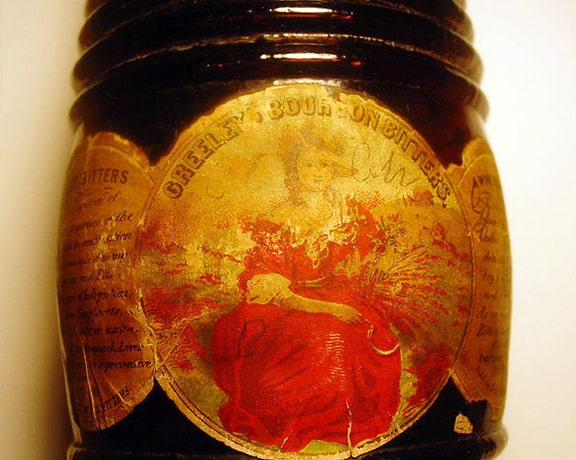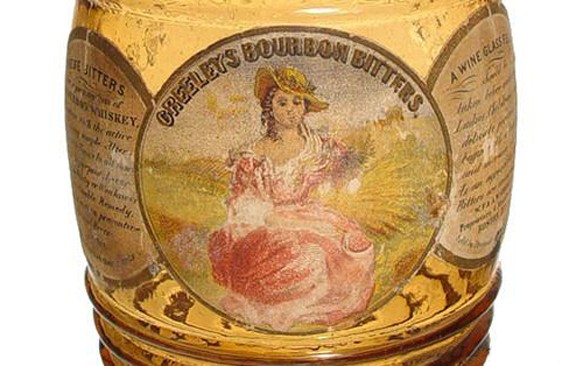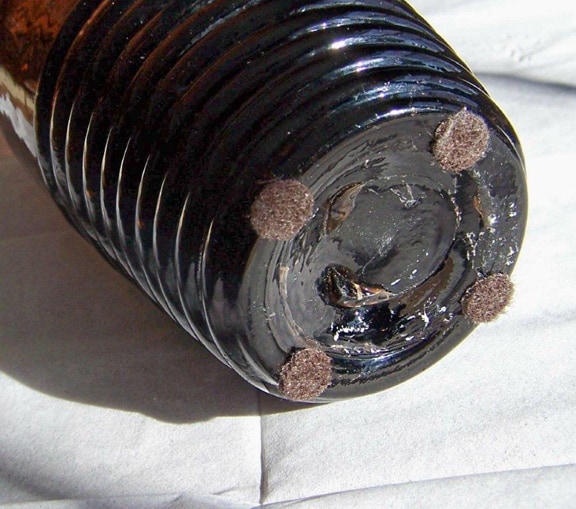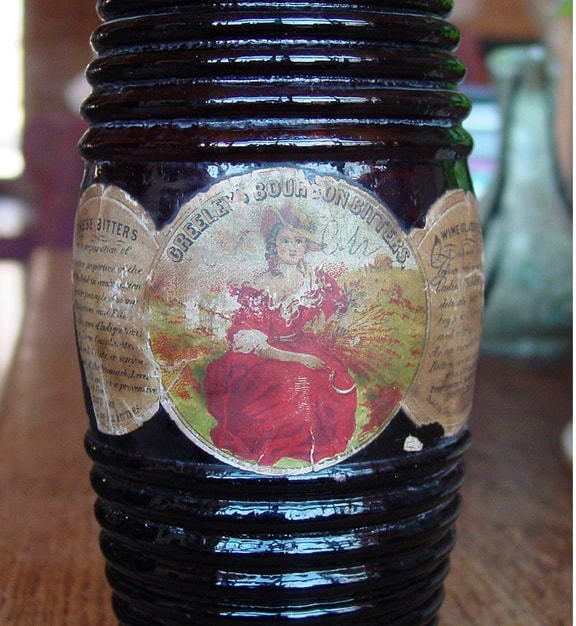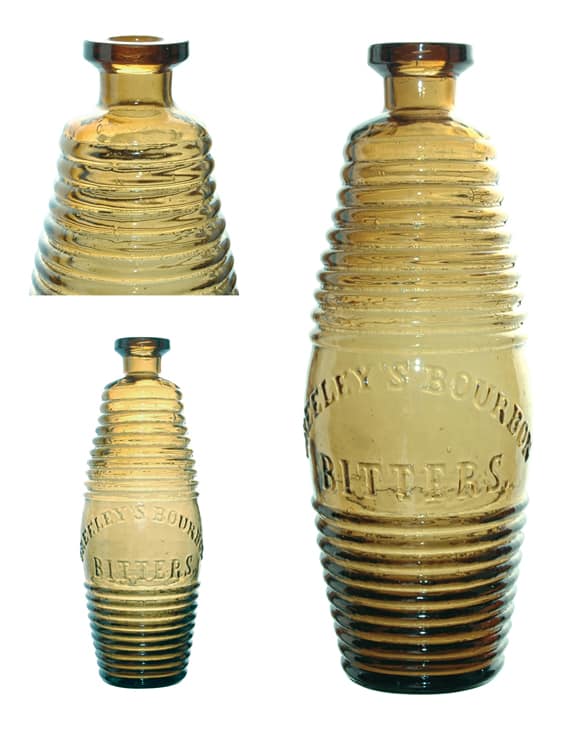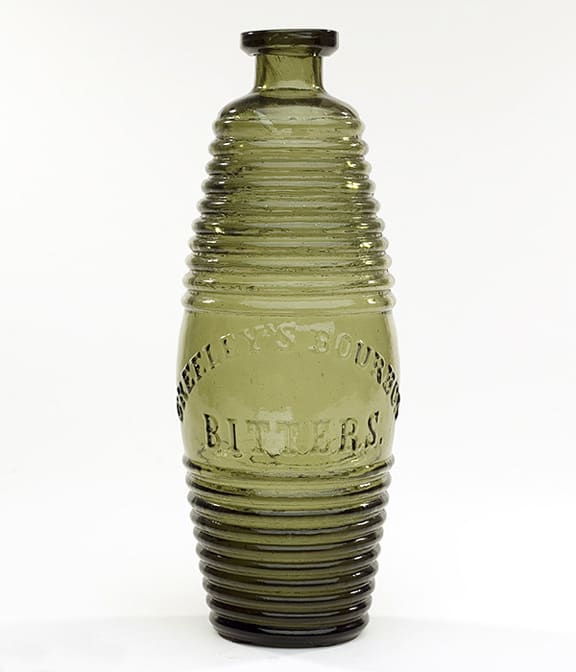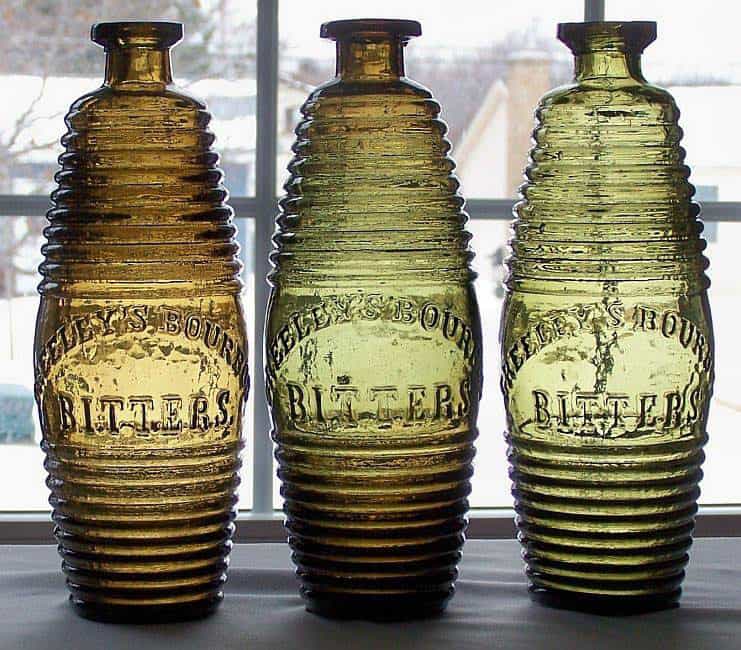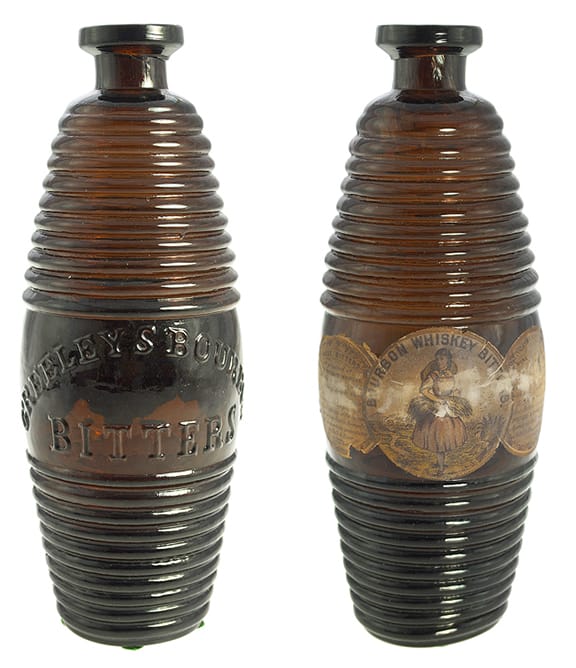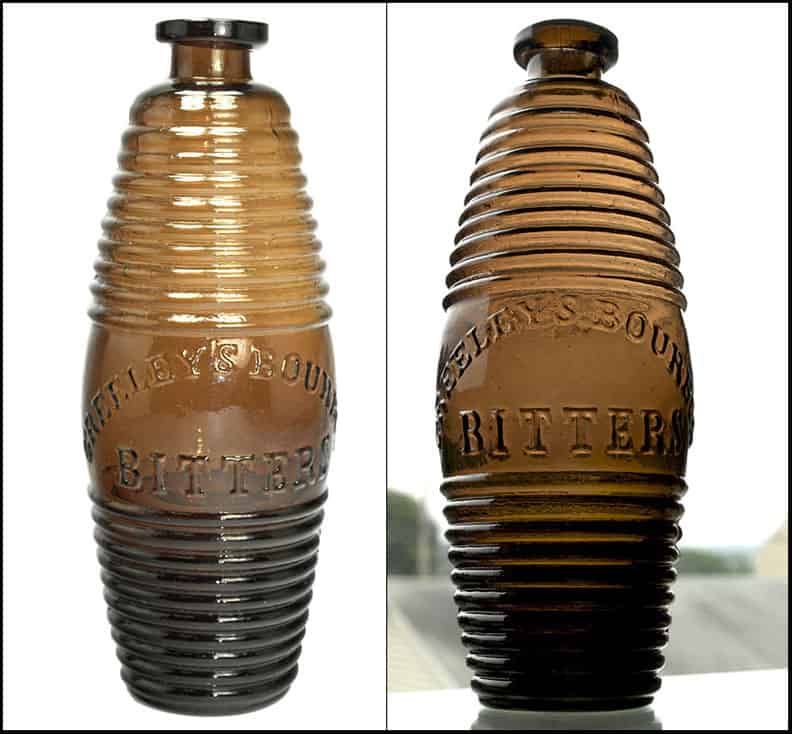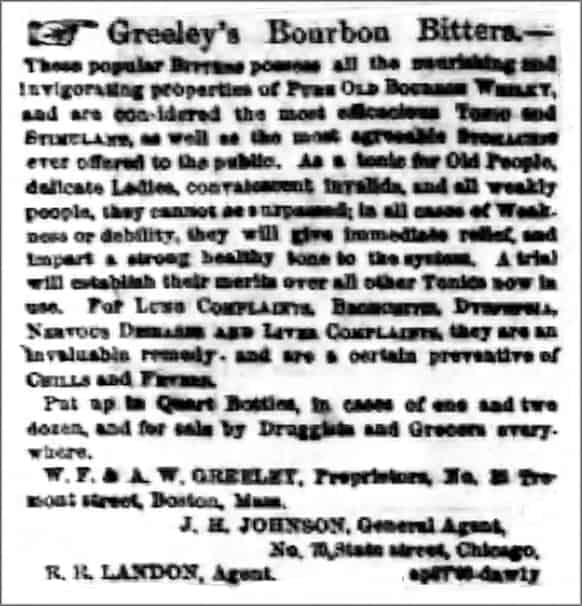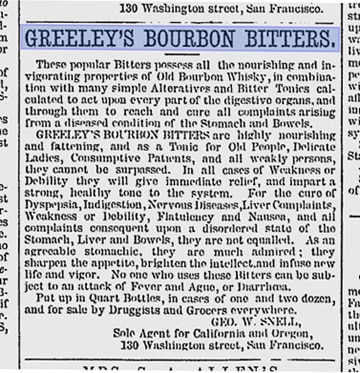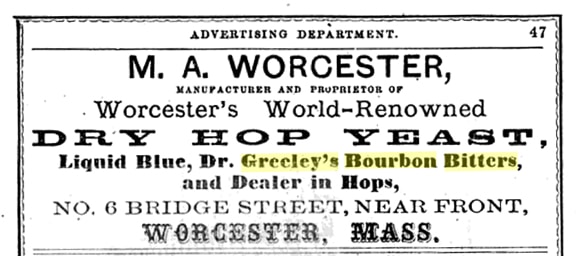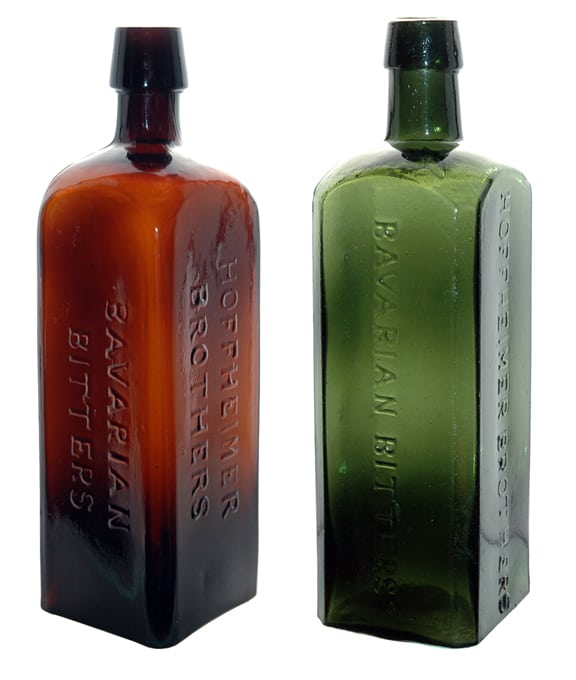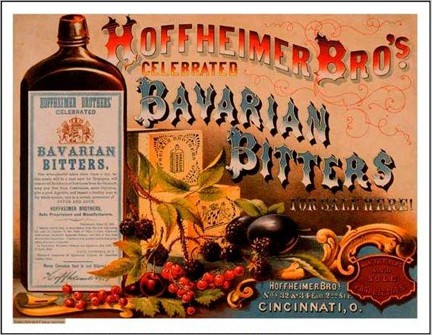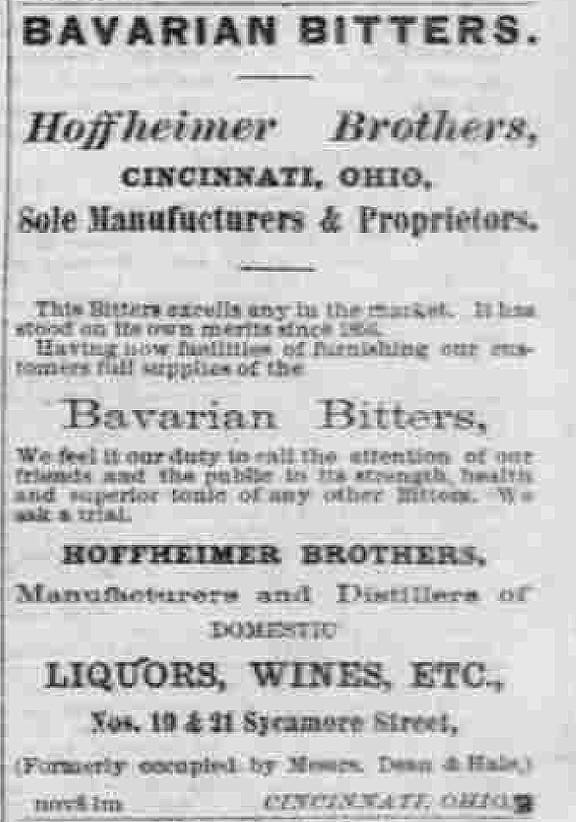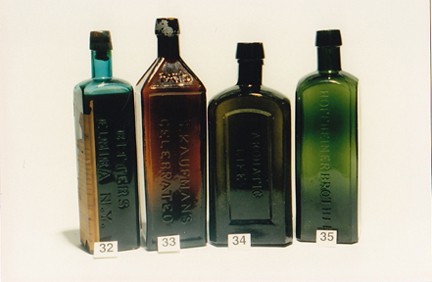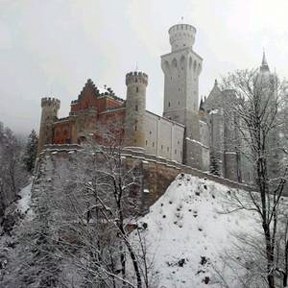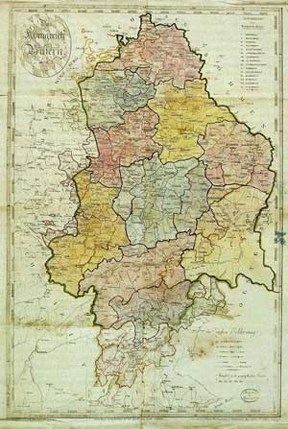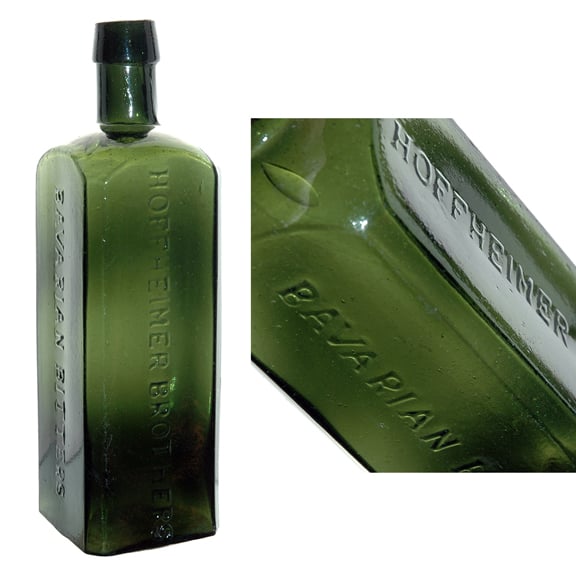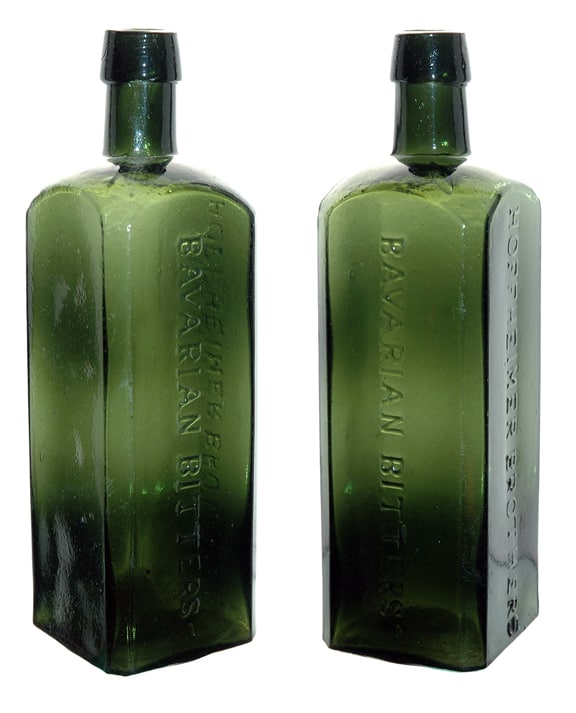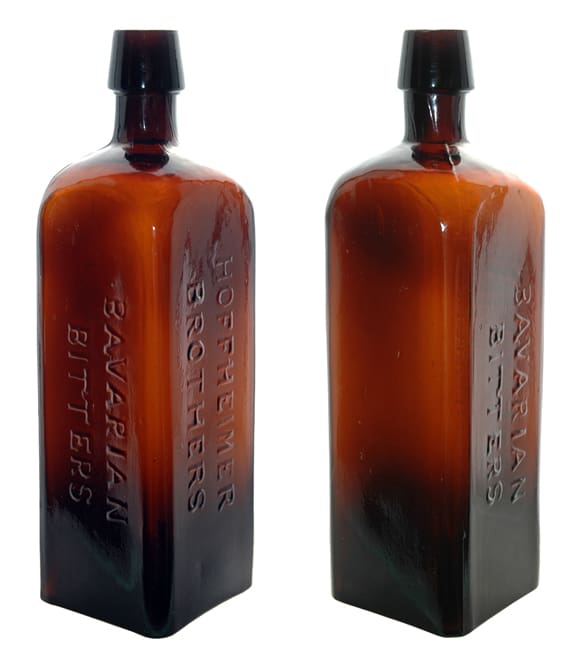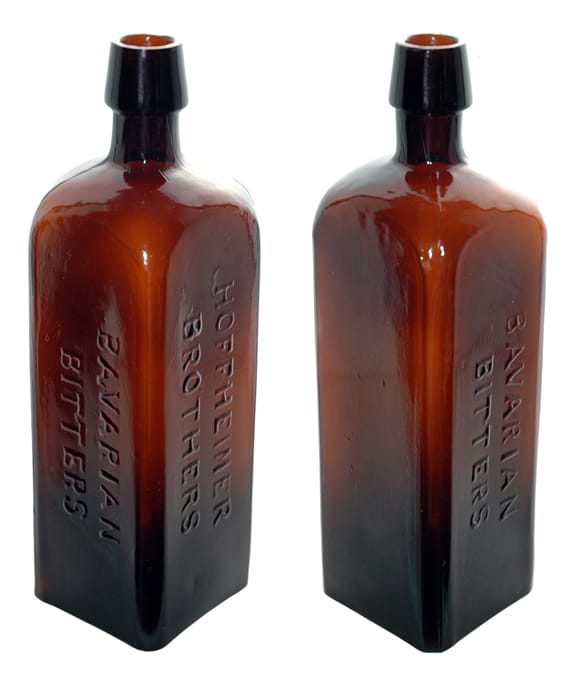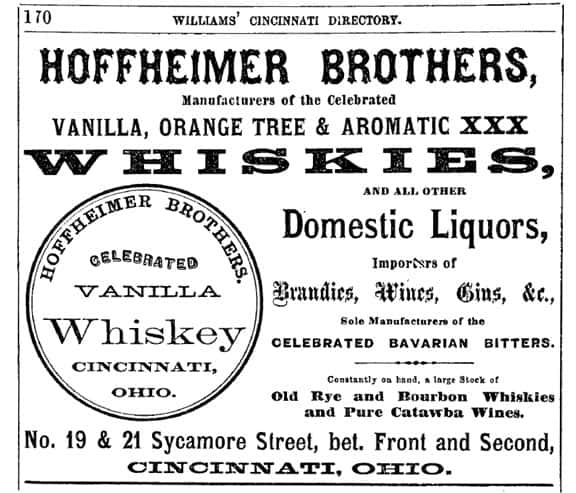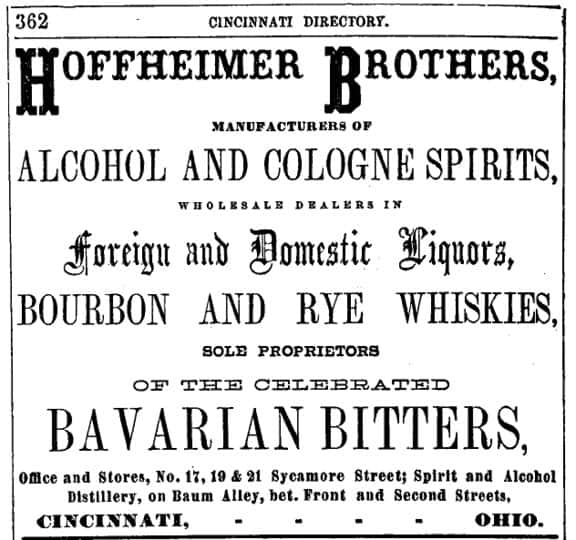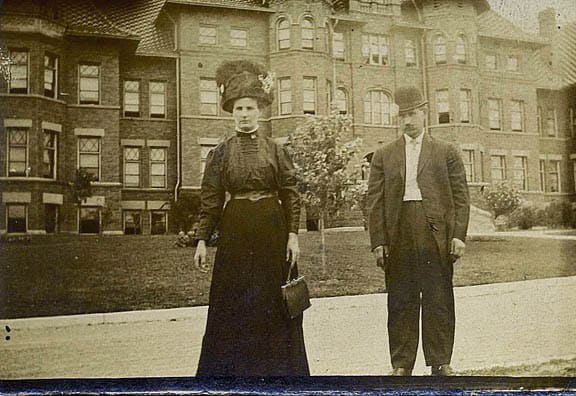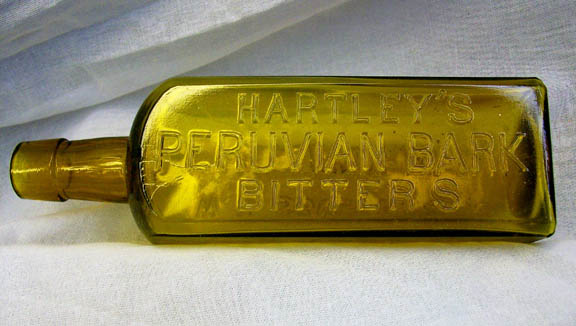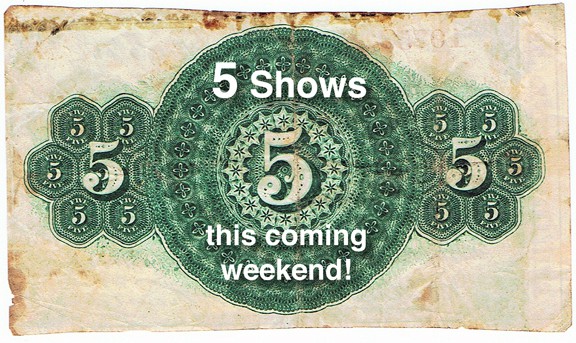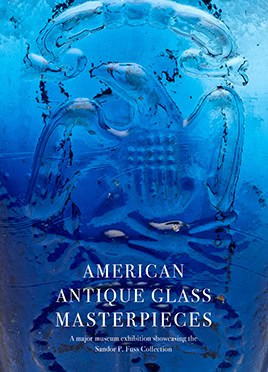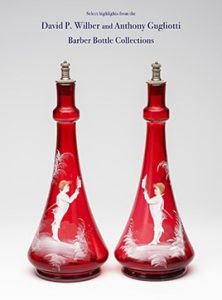
Constitution Bitters – The oldest Figural Bitters?
25 February 2012 (R•033114) (R•082618)
 I did a post earlier today titled: Is the Cooley’s Anti Dispeptic Bitters our oldest Bitters? that prompted an email from collector Sandor Fuss who graciously provided a picture of his extremely rare Constitution Bitters (below) and said in his email:
I did a post earlier today titled: Is the Cooley’s Anti Dispeptic Bitters our oldest Bitters? that prompted an email from collector Sandor Fuss who graciously provided a picture of his extremely rare Constitution Bitters (below) and said in his email:
“Attached is a picture of the ultra-rare Constitution Bitters from my collection, which of course means that it is gem mint. One of two known examples. Pontiled. The other is in Dick Watson’s collection. Ed Gray says it is the oldest of the great figural’s, maybe the oldest period. That is for you to find out!” – Sandor

Constitution Bitters – Fuss Collection
So, first of all, is the bottle formed to represent a gazebo or maybe the top of Independence Hall, or something else? Is the brand named after the United States Constitution or medicinal constitution, the make-up or functional habit of the body?
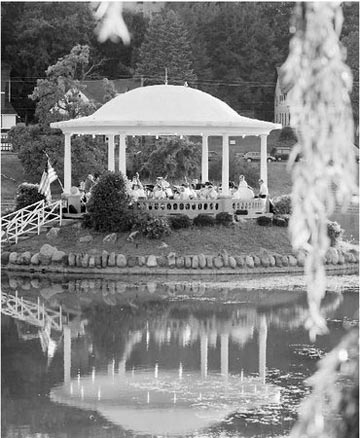
Hiawatha Lake and gazebo in Upper Onondaga Park, New York

Independence Hall
Hmmmm….interesting. There is very little that I can find on this bottle that dates or answers the above questions so I am going to keep this post open (like I do all posts) so that additional information can be added as provided and/or found. See updates further below.
The Carlyn Ring and W.C. Ham listing in Bitters Bottles is as follows:
C 220 CONSTITUTION BITTERS
CONSTITUTION / BITTERS // PUT UP BY / B.M. & E.A.W. & CO. / NEW YORK // f //
8 1/2 x 3 7/8
Round-gazebo, Aqua, LTC, Aplied mouth, Rough mouth, Extremely rare
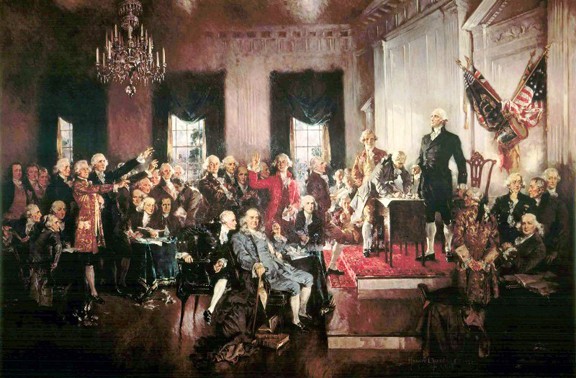
By the way, there are other bottles embossed CONSTITUTION BITTERS which I possess, one being from Richmond, Virginia and the other Buffalo, New York.
Read: The Constitution Bitters from Buffalo, NY
Benjamin M. Whitlock and Edward A. Whitlock
OK, let’s start with what “Put Up By B.M. & E.A.W. & Co.” means as it is embossed on the bottle. This is actually a reference to Benjamin M. Whitlock and Edward A. Whitlock who were grocers and importers conducting business in New York City from the early 1840s through 1860s which might date that bottle in that time frame. Their name (or initials) show up on some other New York bottles (pictured further below). You can read a little about the Whitlock’s company below from The Union Sketchbook.
From The Union Sketchbook:

From The Old Merchants of New York City: Edward A. Whitlock, of the house of B.M. & E.A. Whitlock & Co., was a clerk with the firm of Suydam & Wilson for some time, and left it to go West. Mr. Wilson left his family (besides his estate) the rich legacy of a pure and unsullied name.
 From Rick DeMarsh (RicksBottleRoom.com) (R•033114): …showing them in business as B.M. & E.A. Whitlock & Co.
From Rick DeMarsh (RicksBottleRoom.com) (R•033114): …showing them in business as B.M. & E.A. Whitlock & Co.
Just before the declaration of war in 1812, the Hon. John Smith, of the United States Senate (by the way, a very extraordinary man; he was elected to congress as a representative from Suffolk in 1799, kept in until 1804, when he was made a Senator to fill a vacancy, and re-appointed, and was Senator until 1813, wrote to his step-son, Edward H. Nicoll (Smith & Nicoll that I have wrote much about) stated that war was inevitable, and suggested the purchase of such goods as would be affected in value by the war
This letter was submitted to Suydam & Wilson, and joint purchase was proposed; but the conservative, patriotic character of the house forbade the idea of speculating under such circumstances. Neither of these great houses availed themselves of the information of the senator, and missed a glorious opportunity of making an immense fortune.
Edward A. Whitlock, of the house of B.M. & E.A. Whitlock & Co., was a clerk with the firm of Suydam & Wilson for some time, and left it to go west.
Further research shows them both in 1858: Benjamin M. Whitlock, Grocer, 18 Beekman, H 9 к 16th and Edward A. Whitlock, Grocer, 18 Beekman, H 9 E. 16th.
I am trying to find the “was a clerk for some time with Suydam & Wilson before leaving to go west” blank spot. They were as shown back in business in New York in mid 1850s. None the less, this does date the firm of B.M. & E.A. Whitlock & Co. all the way back to 1813 and maybe sometime before even. As grocers. More to follow…
From Brian Wolff (R•033114): Newspaper clipping to left.
From Eric McGuire: (R•082518) I liked Jim Bender’s History’s Corner photo (see below) from the latest issue of Bottles and Extras and info on the Whitlock’s Constitution Bitters. It piqued my interest in learning a little more about the company and possibly learning when the bottle was produced. I couldn’t definitively find the answer but at least came up with some outside dates for when it was made.

There is actually some good information on the company, primarily because it was such a significant mercantile force and also because the Whitlocks were pro-slavery, yet living in New York. Check out Jack Sullivan’s, Those Pre-Pro Whiskey Men as this site for a good synopsis of the company.
Read: The “Pariah” Whitlocks: Southern Sympathies in NYC
We know that the bottle could not have been made any earlier than December 1855 when the company reorganized from Whitlock, Nichols & Co. to B.M. & E.A. Whitlock & Co.

Whitlock Dissolution of Copartnership Dec 3, 1855 – New York Daily Herald, Tuesday, January 8, 1856
Early on, the company was flush with money and the Whitlock’s spent extravagantly. Since much of its wealth was derived from goods sold in the South, the impending Civil war took a huge toll on sales. The firm became insolvent in April, 1861, and ceased to do business in March, 1862. (Reports of Cases Accrued and determined in the Supreme court of Alabama During June Term, 1873, and January Term, 1874, By J. W. Shepherd, Vol. L, 1876. Pg. 404)
Therefore, I believe it is safe to state that nearly all B.M. & E.A. Whitlock & Co. bottles were blown from the beginning of 1856 to the end of 1862, and more likely ended at the beginning of 1861.
Benjamin Whitlock’s troubles actually began in 1860 when this was reported:
SERIOUS ACCIDENT TO MR. WHITLOCK — On Saturday evening Mr. B. M. Whitlock, while standing in the depot corner of White and Centre streets, was accidentally jammed between two cars, and badly crushed. Three of his ribs were broken, and he sustained other Injuries; He was removed to the New-York Hospital. (New York Daily Tribune, October 29, 1860)
The collapse of his business surely took a toll on his mind and body, and three years later we learn of his demise:
Benjamin M. Whitlock, Esq., formerly one of the prominent wholesale grocers of this City, died on Wednesday last at his residence in Westchester County, after a very brief illness. Mr. Whitlock, in consequence of the present troubles, lost overwhelmingly, because of the failure of his Southern customers to meet their engagements, and was compelled to relinquish his business, which had before been one of the most profitable in the City. He was a man of finest business capacity, and of noble, generous impulses. His hospitality was lavish, and he was noted especially for keeping one of the finest studs in the country, his stock and stables being the center of admiration and interest. These and the remainder of his property he sacrificed when misfortune overtook him, in order honorably to meet his sudden embarrassments .(Frank Leslie’s Illustrated Newspaper (New York, New York, August 29, 1863) He was 46 years old.
Just as it happened to Benjamin Whitlock, his brother, Edward Whitlock, suffered a similar but more serious incident with a train:
Mr. Edward A Whitlock, of the firm of B.M. & E.A. Whitlock & Co., of Mott-Haven, was run over and instantly killed Saturday afternoon, his foot having slipped as he was stepping into a Harlem car at the twenty-sixth street railway station. (New-York Tribune, May 29, 1865) He was 46 years old.
In all my newspaper searching, I have yet to find any reference to the Whitlock’s advertising or producing their Constitution Bitters. Seward & Bentley of Buffalo, New York, didn’t begin their version of Constitution Bitters until 1865.
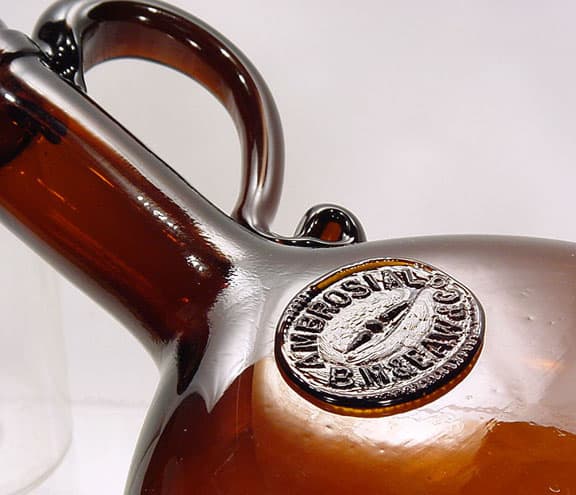
Handled Chestnut Flask, AMBROSIAL – photo GreatAntiqueBottles.com (Ed and Kathy Gray)
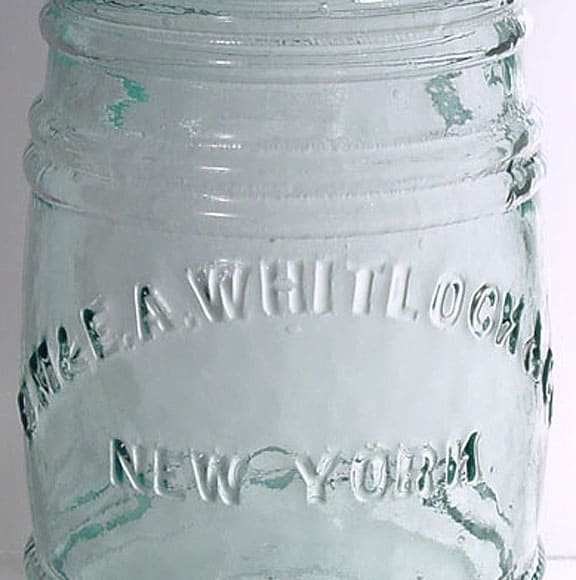
B.M. & E.A. WHITLOCK & CO. NEW YORK (barrel form) – photo GreatAntiqueBottles.com (Ed & Kathy Gray)
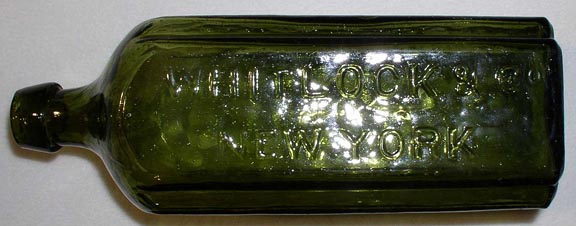
WHITLOCK & CO. NEW YORK – image AntiqueBottles.net
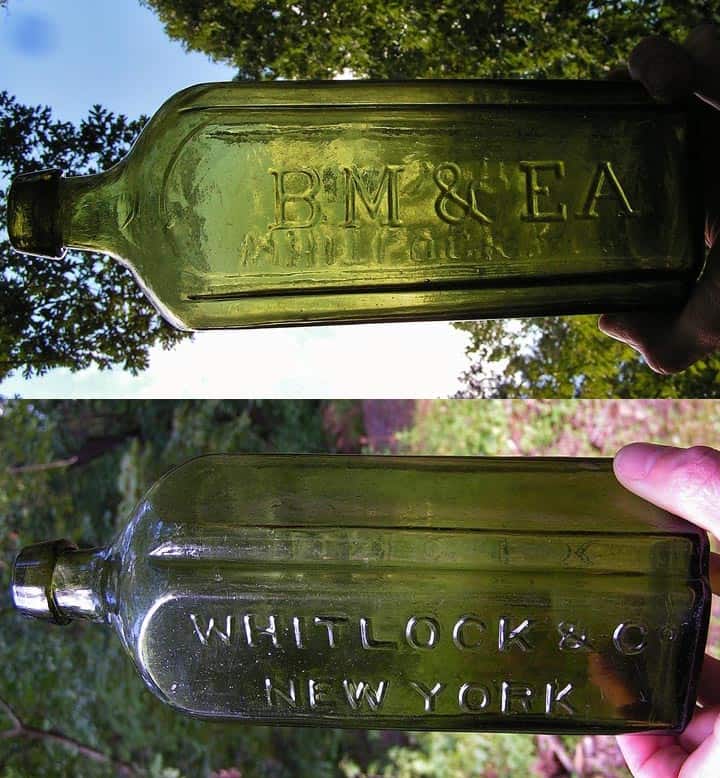
NEW: WHITLOCK & CO. NEW YORK. Great example showing up on eBay. November 2012
In the mean time, enjoy the Fuss picture. I’ve seen this beauty a few times at Sandor’s and it is really quite a gem. I will see Dick (Richard) Watson (and Sandor) at the Annual Baltimore Antique Bottle Show and Sale next weekend so maybe we can further discuss as Dick is a legend and a great source for bitters information. Remember, I am always open for MORE information.
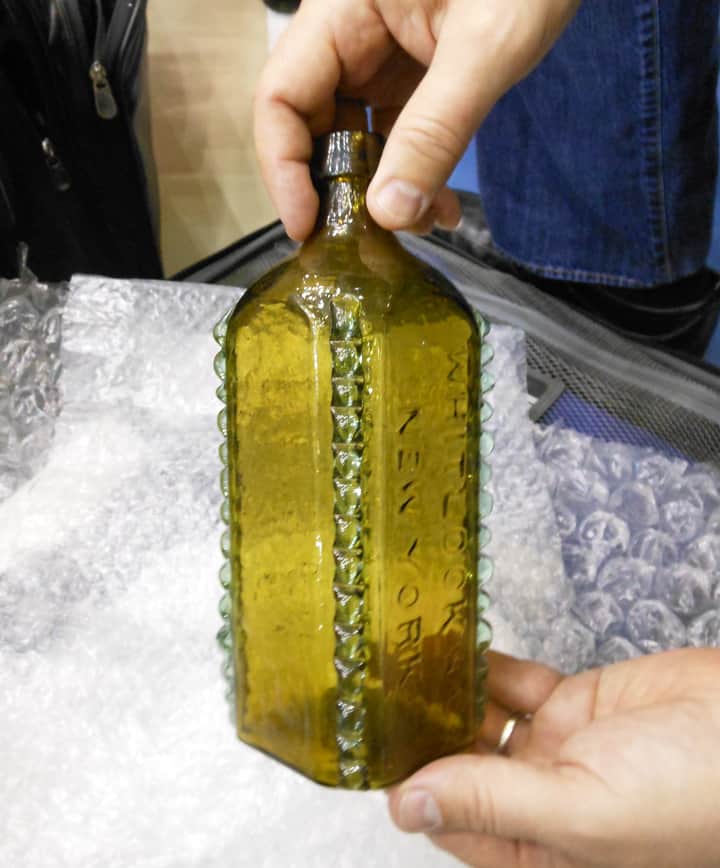
Unique Whitlock & Co. New York

